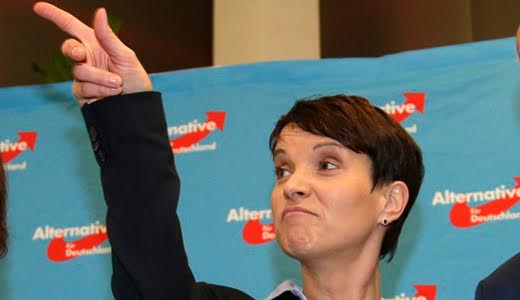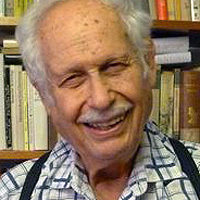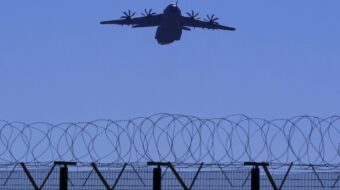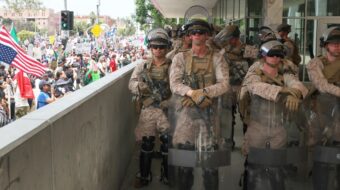
BERLIN – Following German state elections three weeks ago the politicians are still sorting things out and pasting new coalitions together. Most parties here have a color; black is for Merkel’s Christian Democrats due to traditional clerical ties, so southwestern Baden-Wurttemberg will soon have a green-black government.
That’s not totally new (nearby Hesse has one too) but it’s the first time a cocky Green minister-president will be on top and the “blacks” not very happy junior partners. No other mix added up to the needed 50 percent of legislature seats. This marriage of two parties once seen as bitter foes hardly augurs well for any principles of the Greens, who once began as daring, tradition-breaking rebels.
Rhineland-Palatinate will get a ménage a trois. The Social Democrats (SPD), who nose-dived everywhere else, had a very popular leader here, and she saved the day for them. But to get 50 percent she needed not one but two smaller partners, the Greens and the right-wing Free Democrats (FDP). This party, almost considered dead after many losses, was perhaps inspired by biblical Easter-time Resurrection stories and returned from the grave, bloody but unbroken, to join up as third partner. Since its symbol color is yellow, the result was a “traffic light coalition” – red, yellow and green.
In East German Saxony-Anhalt a three-cornered shot-gun wedding was also required. It will be a true novelty, again led by its “black” CDU man, with the SPD again as junior partners (still called red, though with an embarrassed smile). But due to the latter’s stark losses the five Green seats were also required for the 50 percent. This unprecedented black-red-green alliance also got a nick-name; someone noticed that the flag of Kenya had these colors so it was labeled “Kenya coalition,” without asking anyone in that African nation for permission or endorsement!
Two important parties emerged empty-handed from this wheeler-dealing, for very different reasons.
The Alternative for Germany (AfD) recalls Trump or Cruz. Its main plank is hostility to refugees in Germany, to all non-Christian “Islamists” or any people of color who wear the wrong clothing or speak with an accent, not a German dialect. Two leaders, president Frauke Petry and vice-president Beatrix von Storch, weakly recanted their calls for police to shoot anyone crossing into Germany illegally, even women and, with Storch, children. When a BBC reporter interviewed Petry her fluent English was impressive (she had studied in England) but her awkward floundering about “preserving Germany for the Germans” ended with Trump-like whining about the unfriendly interviewer.
Her vice-president – the full name, Beatrix Amelie Ehrengard Eilika von Storch née Duchess of Oldenburg indicates her noble past – seems not too far from another past; her grandfather Baron von Krosigk was one of only two Hitler ministers to last the full twelve years. Aside from shots at the border she and her AfD favor a total Verbot of abortions and, except for abstinence, disapprove of family planning, even condoms, since “German” offspring are needed. And no same-sex couples. They favor a return of the giant estates divided among East German farmers in 1945 to their blue-blood owners and favor a go-ahead for coal, atomic energy and fracking and, since climate warnings are “nonsense,” no new-fangled cutting of CO2 – but rather cutting taxes for the wealthy, cutting government aid for the jobless and needy and cutting out any and all “leftist liberal” ideas. It’s like the GOP “auf Deutsch”!
Although tougher German and European measures have radically cut the numbers of refugees arriving in Europe, the AfD still thrives on fear and hatred of them. But, recalling the U.S., it also lives from distrust and anger at “those on the top,” which means ruling parties like the CDU and SPD and extends to Angela Merkel’s baby, the European Union, with its dubious, complicated foreign components and even its Euro currency. Such feelings are common all over Europe, as dramatically demonstrated by a majority of Dutch voters last week who voted not only against a deal with the shaky, shabby, shady Ukrainian government, but actually against the whole EU.
Leftist opposition and the ultra-right AfD danger
With Bernie in the U.S., Corbyn in Britain and various kinds of leftist opposition in Ireland, Spain and Portugal, resistance to billionaire-led governments has been growing, most dramatically last year in Greece until German “austerity” smashed it (though perhaps not permanently). Germany already has the LINKE party (The Left party), with 64 seats in the Bundestag (out of 630). It heads one state, Thuringia, and is junior partner in Brandenburg. But it has failed to fill that gap of anger, worry and distrust among working people which the AfD is capturing so menacingly, now up to a 14 percent poll rating while the LINKE, after missing the 5 percent needed to enter the legislatures in the two West German votes, slithered in eastern Saxony-Anhalt from a previous 23.7 percent, which had given it hopes of heading a second state coalition, down to a miserable 16.3 percent in March. With its national poll at a low of only 8 percent, down from 10-11 percent only a few months ago, it is threatening to lose much of its political significance.
Yet it is so desperately needed! It should be leading the fight to stop urban gentrification and enforce genuine lids on rental rates, with new, inexpensive housing for working people, also for the refugees. It should loudly oppose the gradual but increasingly painful costs of medical insurance and care. (Yes, that good side shown by Michael Moore’s film is being eroded!) It is needed to fight for good schools for everyone, again including immigrants, and against the slide toward private schools. And it must always fight the turn from regular jobs to uncertain, part-time and low-paid work and loudly support the possible new strikes of kindergarten teachers and communal employees.
Above all, it must resist military expansion! Defense Minister Ursula von der Leyen is demanding 130 billion Euros for the next fifteen years, a giant increase. Much of it would go for a ravenous menagerie of tanks: Lynx reconnaissance tanks, Badger pioneer tanks, Fox transport tanks, Weasel armored airborne assault vehicles, Leopard battle tanks and Puma personnel carriers at € 8.85 million a pop – manufactured in part by the same companies which made Tiger and Panther tanks for Hitler. Why does Germany need hundreds of rapacious predators – and planes, helicopters, drones? Are its borders threatened by anyone, near or far? Its military strength, officially banned in 1945, was to be slashed after 1990 with the end of the Cold War. But since swallowing the East German GDR it has steadily expanded, with troops now involved in sixteen areas, from Afghanistan to Mali. And as if such echoes of past eras were not worrisome enough, for over a year we must read articles in the press like these:
“The Pentagon has drafted plans to deploy U.S. troops and tanks full time along NATO’s eastern border, in what would be the first such deployment since the end of the Cold War….”
“Only a few meters from the Russian border Estonia held a ‘symbolic’ military parade, accompanied by U.S. forces. 140 NATO tanks and armed vehicles took part…”
“Germany is sending its five Eurofighters stationed in Estonian Ämari aloft with all weaponry for patrol flights in the Baltic region… Their full arms equipment includes a loaded cannon, infra-red short-range missiles, an electronic defense system and radar-guided middle-range U.S. Amraam missiles…which can hit targets at a distance of 55 to 180 kilometers. Air Force chief Karl Müllner sees that as a necessary signal – to his own soldiers and to Russia… the heavy armament is important for the troop’s morale…”
“The flight time to goals in St. Petersburg is only five minutes,” writes the Estonian “Postimees,” (Estonian daily newspaper.)
“The German TV channel ZDF (a public service broadcast) reported on the stationing of U.S. atomic weapons at its air force in Büchel in Rhineland-Palatinate. In case of war German pilots would fly these weapons to conflict areas as part of the NATO strategy of ‘nuclear participation’.”
Do no generals and no ministers recall what German weapons meant to Leningrad during the two and a half year siege from 1941 to 1945 – with the slow murder of over a million civilians?
Sahra Wagenknecht, co-chair of the LINKE caucus in the Bundestag, said: “Those highly dangerous war games increase the danger for all of Europe…Whoever sends armed German Eurofighters to Eastern Europe has clearly lost his mind.”
Yes, the LINKE, almost alone, says the right things and takes proper positions on all these issues. That alone is a vital necessity. But I think if it wants to become effective and grow in importance it must find ways to get out among the people, to win them for smart, understandable, daring, even provocative actions, offering them a true alternative to the vicious slogans of the AfD and its fascist accompanists as well as to the guilty leaders of the old parties who are still steering Germany into ever more dangerous waters, at home and abroad.
Photo: Frauke Petry, chairwoman of the German ultra-right AfD. | Michael Sohn/AP










